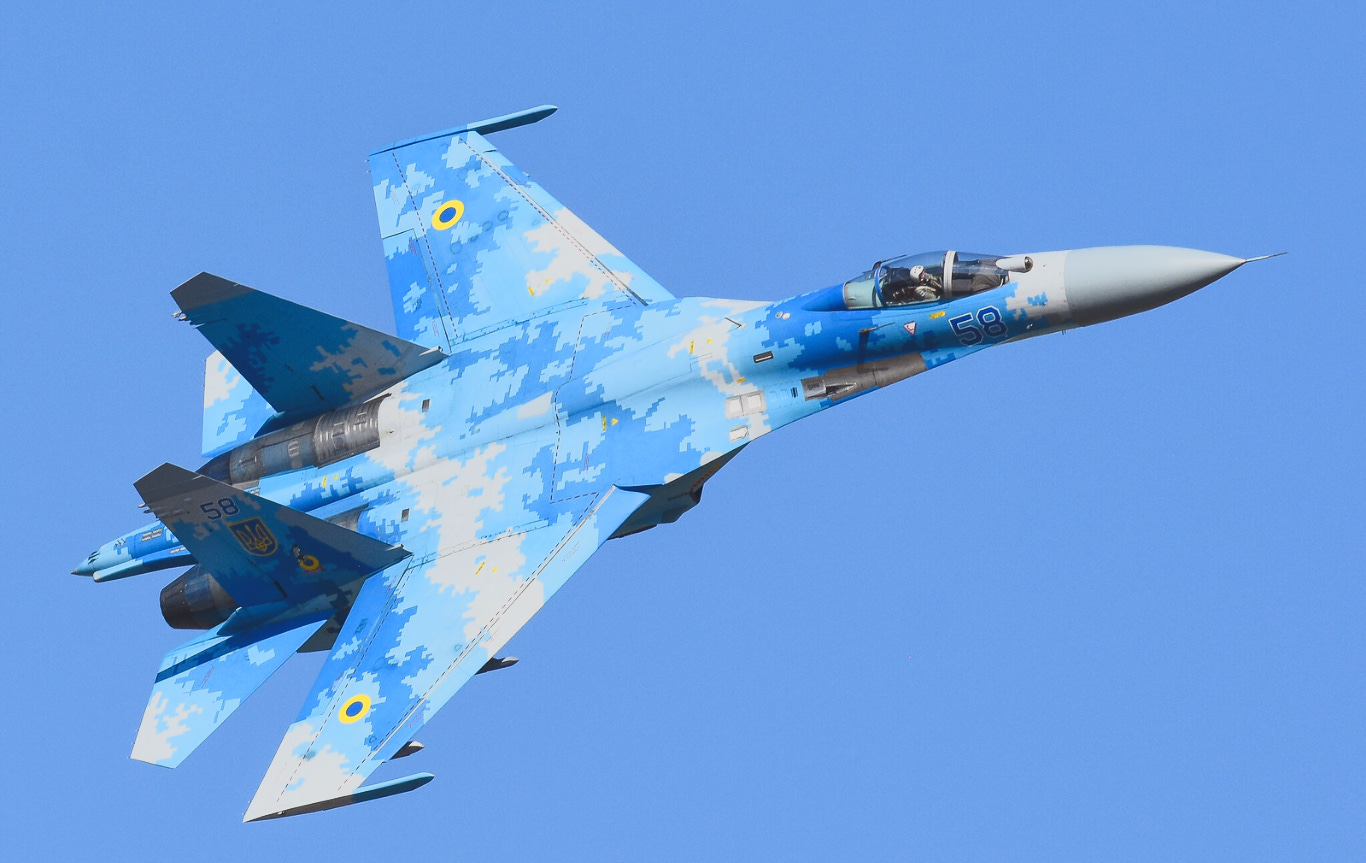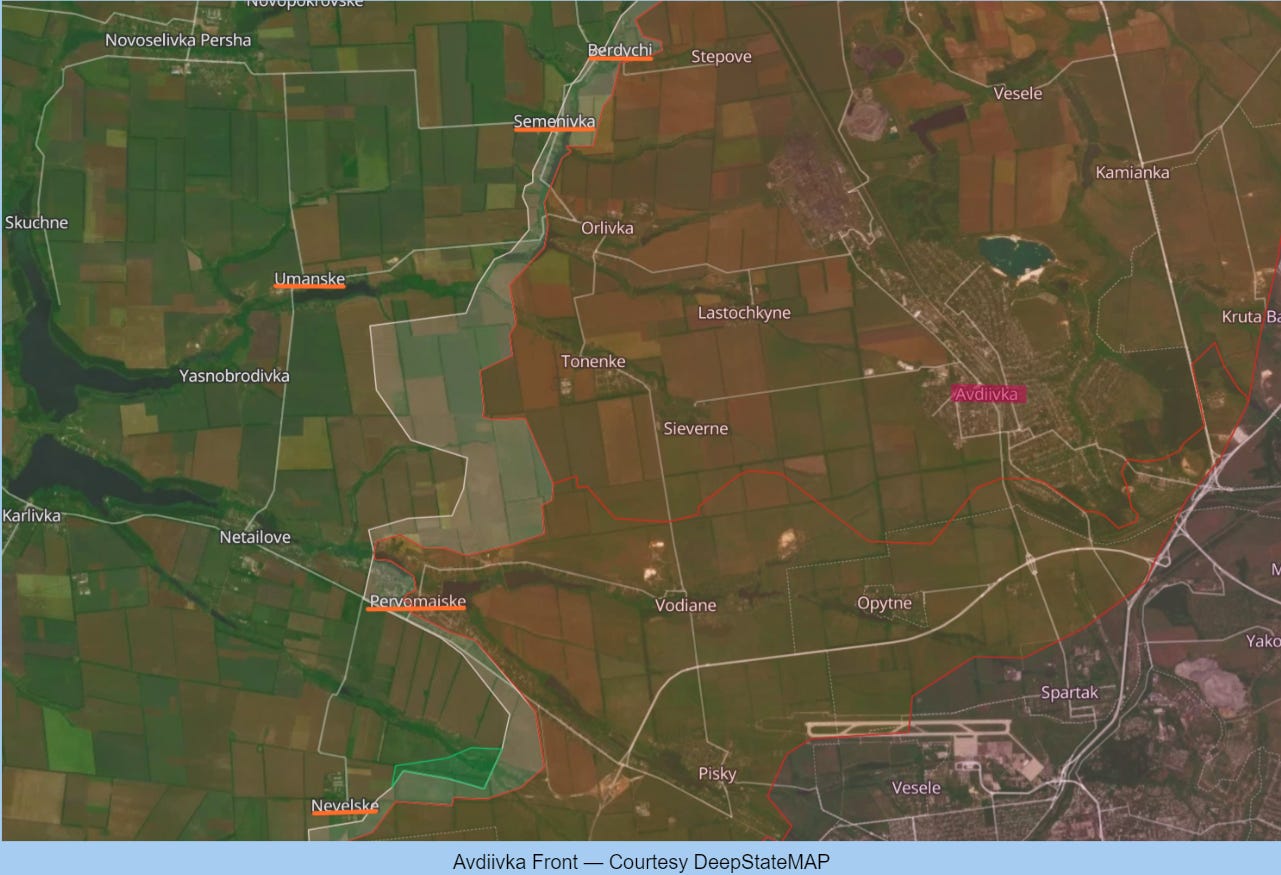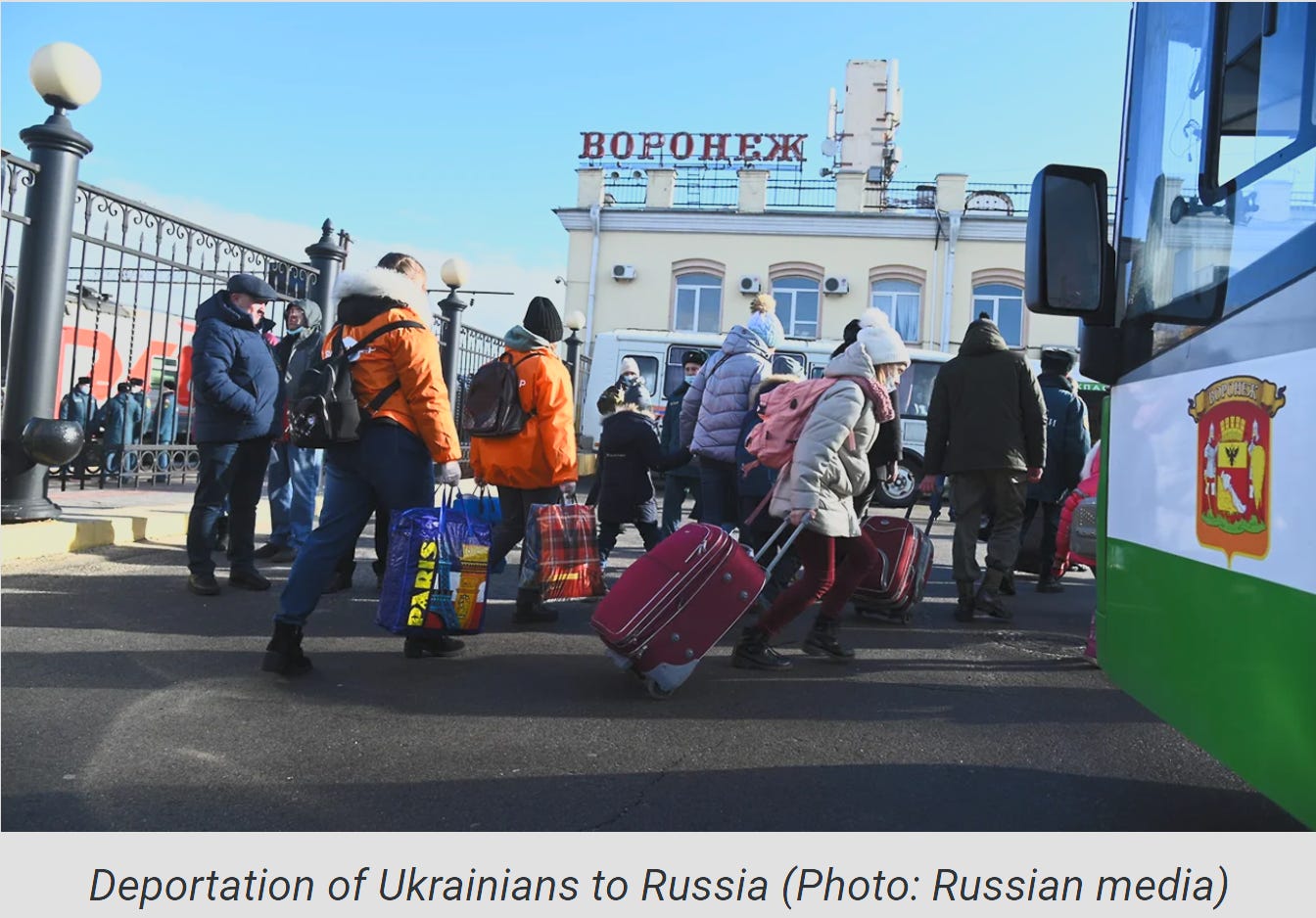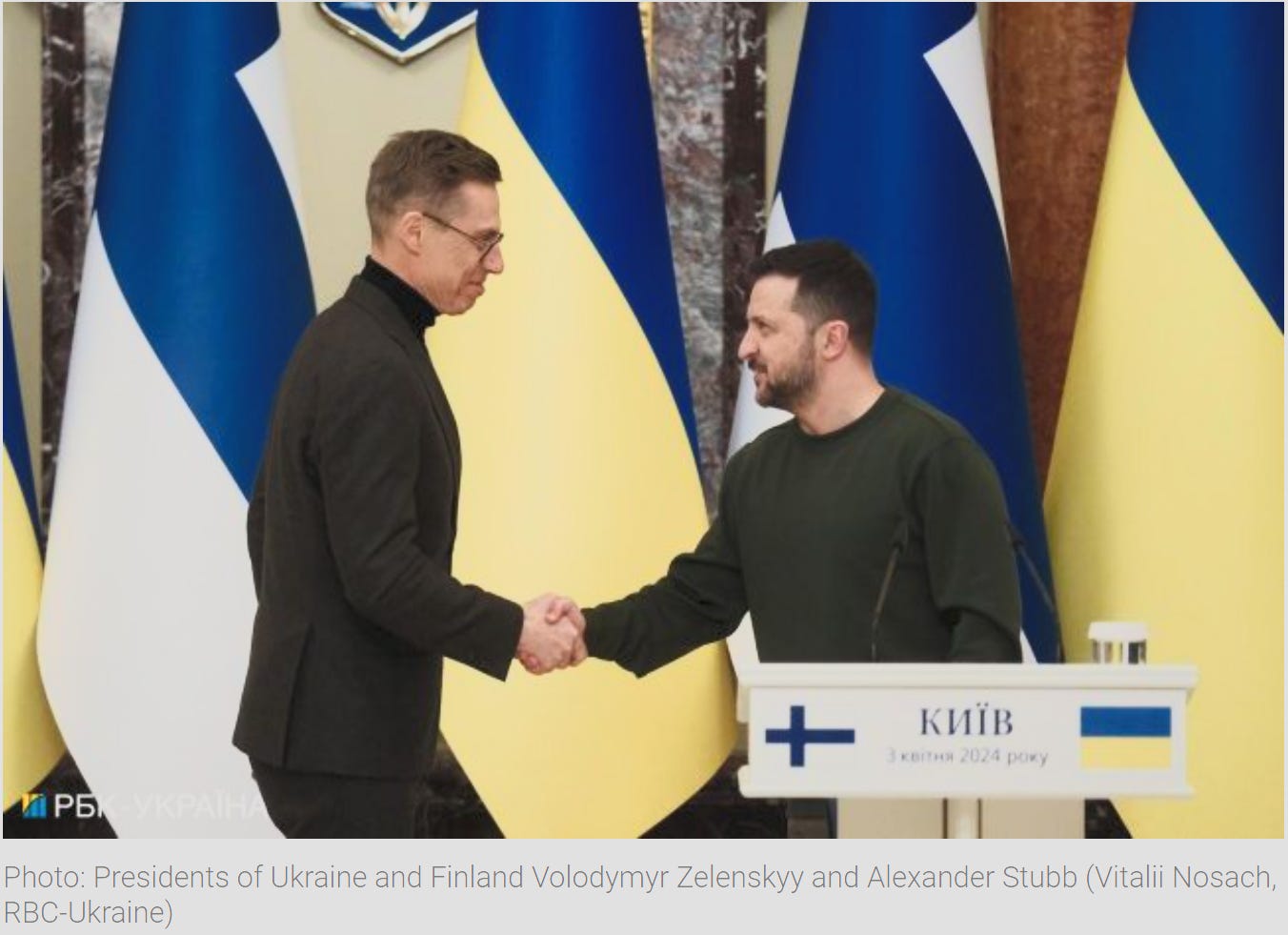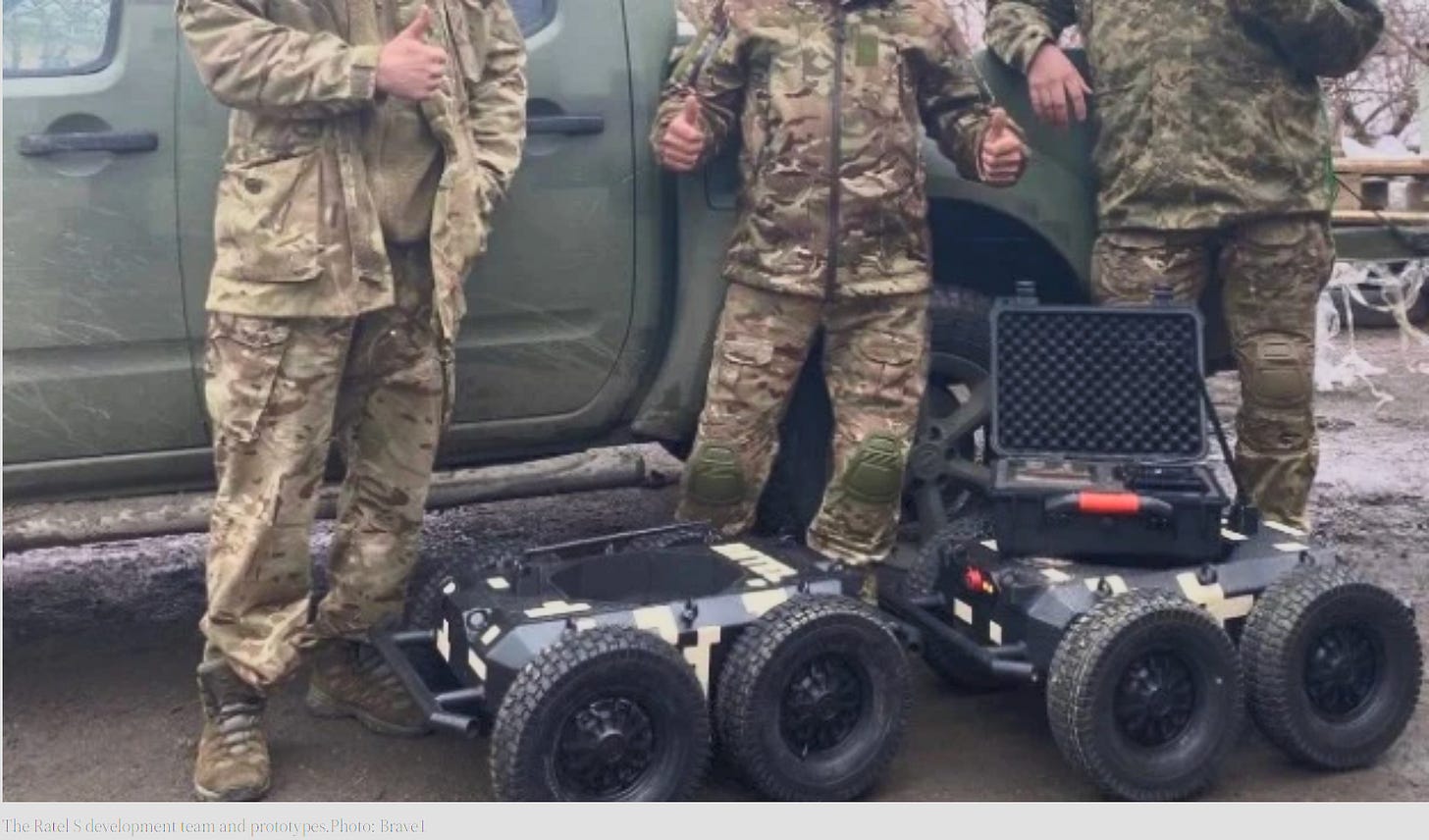Slava Ukraini! In early 2022 I began a Telegram channel aggregating news from a number of sources daily on the war in Ukraine. Since June 2023 I have provided a daily draft for the Ukraine War Brief Podcast collecting news from over 60 sources daily, much of which forms the basis of the script. While the Podcast is on hiatus I will make this Draft available here both on my own Substack and The People’s Media for those who wish to keep up with events on a daily basis.
INSIDE UKRAINE
ALONG THE CONTACT LINE
GSAFU Morning Report
The General Staff of the Armed Forces of Ukraine in its situation update at 06:00 on Apr. 3 stated that it was day 770 of the full-scale invasion of the Russian Federation against Ukraine.
During the past day, 75 combat engagements took place. Over the past 24 hours, the enemy carried out 2 missile strikes, 78 air strikes, and 66 MLRS attacks across the positions of our troops and settlements. As a result of the Russian attacks, unfortunately, there are dead and wounded among the civilian population. Destruction and damage to residential buildings and other civilian infrastructure.
At the same time, Ukrainian soldiers continue to inflict losses in manpower and equipment on the occupying troops, exhausting the enemy along the entire front line.
Ukrainian missile forces struck 6 concentrations of troops, weapons, and military equipment, 8 artillery systems, 1 anti-tank system, and 1 MLRS of the russian invaders.
Air Force Daily Report
The Ukrainian Air Force in its situation update at 06:00 stated that during the previous day it aunched air strikes on 1 anti-aircraft missile system and 13 concentrations of troops
The Khortytsia operational-strategic group
(Responsible for the Kup’yans’k, Lyman, and Bakhmut axes, in the northeastern part of Ukraine. )
Kup’yans’k axis: The enemy carried out 1 assault in the vicinity of the settlement of Synkivka (Kharkiv oblast) unsuccessfully trying to improve its tactical position.
Lyman axis: Ukrainian defenders repelled 10 attacks near Terny (Donetsk oblast)
Bakhmut axis: Ukrainian Defence Forces repelled 6 enemy attacks in the vicinities of Spirne and Klishchiivka (Donetsk oblast).
The Tavria operational-strategic group
(Responsible for the Avdiivka, Novopavlivka, and Orikhiv axes, in the central-eastern and southeastern part of Ukraine.)
Avdiivka axis: Ukrainian Defence Forces repelled 14 enemy attacks,supported by aviation in the vicinity of the settlements of Berdychi, Semenivka, Umans’ke, Pervomais’ke and Nevel’s’ke (Donetsk oblast).
Novopavlivka axis: Ukrainian Defense Forces continued to hold back the enemy in the vicinities of Novomykhailivka and Urozhaine (Donetsk oblast). The enemy made 24 attempts, with air support to break through the defense of Ukrainian troops in that area.
Orikhiv axis: Ukrainian Defense Forces repelled 4 attacks, hear Robotyne, northwest of Verbove (Zaporizhzhia oblast) and Staromaiors’ke (Donetsk oblast).
The Odesa operational-strategic group
(Responsible for Kherson, Qırım, (also known as Crimea) and the Black Sea.)
Kherson axis: Ukrainian defenders continue to maintain their positions. Over the past day, the enemy carried out 8 unsuccessful assaults on the positions of the Ukrainian Defense Forces on the left bank of the Dnipro River.
TEMPORARILY OCCUPIED TERRITORIES
Deportations and repressions: How Russia conducts ethnic cleansing of Ukrainians in occupied territories
Having occupied part of Ukraine's territories, Russia is seeking to subjugate or destroy Ukrainians on their land. RBC-Ukraine explains how the invaders conduct ethnic cleansing, where Ukrainians are deported, and why Russians are buying apartments in Mariupol.
Over the past two years of the war in Ukraine, Russia has been actively using the narrative that Ukrainians are a non-existent nation. Publicly, Kremlin propaganda says that Ukraine was created by Vladimir Lenin, that Kyiv is a Russian city, and that all of Ukraine's cultural heritage is either fiction or something that belongs to Russia.
At the same time, Russia is seeking to either neutralise or destroy the Ukrainian ethnic group. In the occupied territories, it burns historical textbooks, loots museums. In addition to propaganda, repression, and inducement to collaborate, the Russian occupation army, together with the special services, conducts ethnic cleansing.
Ukrainians are being squeezed out of their cities, forced to move to Russia, or deported. Russian citizens are being "embedded" in their apartments, workplaces, and everyday life. Thus, the Kremlin, planning to play the long game, wants the captured Ukrainian cities to be filled with Russians loyal to it.
The scheme used by the Russian Federation has been used for a long time. At one time, forced expulsions affected Chechens, Crimean Tatars, Kalmyks, residents of the Baltic States, Ingush, and Bulgarians. Joseph Stalin was the most active in this field, and his actions would later be called the era of Stalinist repression. Ethnic cleansing is one of the key tools of Russia's colonial policy and has all the hallmarks of genocide.
The Kremlin actively broadcast statements that the people of Donbas were being repressed by Ukrainians and needed to be protected. It was with this motivation in mind that Putin announced the launch of the special military operation on February 24. However, the Russian occupation authorities, taking advantage of their long stay in parts of Donetsk and Luhansk regions, launched a large-scale mobilisation of the entire male population, says Denys Kazanskyi, a journalist born in Donetsk and former representative of Ukraine in the Trilateral Contact Group.
Initially, they tried to recruit Donbas residents into the ranks of the so-called Donetsk People's Republic and Luhansk People's Republic armies voluntarily, and a small number of them volunteered. But the overwhelming majority of men of almost any age were taken by force to fight in the war with Ukraine.
"A lot of people died then. They were mostly driving these mobilized in the front lines. Now there are not so many of them left, they have raked all the men out of there. That's why they're already mobilizing Russians because a lot of people died in the first wave. No one counted them, the Russian army did not even include them in its losses, because they are allegedly the losses of the so-called Donetsk People's Republic and Luhansk People's Republic armies, Kazanskyi adds.
For eight years, the Kremlin has been actively Russifying parts of Donetsk and Luhansk regions, broadcasting propaganda and narratives that Donbas is Russia. As a result, during the first months of the full-scale Russian invasion of Ukraine, the Russian occupiers killed thousands of Ukrainians, forcing them to commit war crimes and take up arms against their people.
A few months after Russia's invasion of Ukraine began, a public called "Real Estate of Mariupol and Pryazovia" appeared on the Russian social network Vkontakte. In it, Russians posted ads: "I'll buy a house. Inexpensive, partial destruction is acceptable", "I will buy a house by the sea, any condition", "I will exchange a house in Volgograd for a private house in Mariupol".
“People are being evicted under the pretext of reconstruction or repair. They say you have to leave the premises. In return, they give nothing, nothing at all - no dormitories, no manoeuvrable housing. There is no new housing and they cannot claim it. That is, people cannot claim the promised compensatory housing because their housing seems to have survived. Similarly, they cannot receive monetary compensation for new housing."
— Petro Andriushchenko, an advisor to the mayor of Mariupol.
Meanwhile, Russian contractors are selling the apartments after making simple repairs, installing windows, and renovating the facades. Mariupol residents, unable to buy back their own homes, are forced to leave. And that's when the offers come in.
Russian officials come to these people who are left without housing and say, "Go to Voronezh [Russia], there is a program there, you will be given housing, and so on. No one talks about this loudly," Andriushchenko adds.
There is a similar situation regarding jobs, Ukrainians are laid off from their jobs, which are refilled by Russians relocated to occupied Ukraine and the Ukrainian former employees are told there are jobs available - in Russia.
In addition to the obvious goal of ethnic cleansing, this whole process has another, perhaps the most important factor: the Russians see Mariupol as a major logistics hub. The Kremlin needs to invest in the city by the sea to have another option for controlled communication between Russia and Ukraine. To do this, Mariupol must become as loyal to the Russian occupation authorities as possible.
A similar situation exists in all the occupied territories to varying degrees. In the part of the Kherson region occupied by the invaders, Russians who came there are registering housing near the sea, says Oleksandr Tolokonnikov, a spokesperson for the Kherson Regional Military Administration.
"There are a lot of seized houses in the coastal area by the sea. Hotels and guest houses have been seized, where they either live or settle. If the owners have left, these houses are re-registered under the law through the courts, again, Russian courts," Tolokonnikov says.
"We evicted a large number of families. It was very difficult to do. But we did. Those who in one way or another did not support the special military operation. Those who insulted the flag and anthem of Russia, the president of the Russian Federation."
These are the words of Yevhen Balytskyi, a gauleiter from the Zaporizhzhia region, who fled to Russia a few months after the invasion began. He openly says that the Russian invaders are evicting the local population from the occupied territories of the Zaporizhzhia region.
THE HOME FRONT
Zelenskyy: Russia aims to mobilize 300,000 military by June
Speaking of Russia’s plans to mobilise and Ukraine’s corresponding needs, President Volodymyr Zelenskyy at a joint press conference with his Finnish counterpart Alexander Stubb in Apr. 3 stated the following, as reported by RBC-Ukraine.
"We don't need half a million. The corresponding number of those who were not on the front line will be sent to the front. As for the specific number of how many will be mobilised - I'm not ready to say yet. I can say that Russia is preparing to mobilise an additional 300,000 military personnel by June 1," the president said.
RUSSIAN WORLD
Russia’s feeble attempts to protect its air assets undermined by stupidity
The UK Ministry of Defence in its Apr. 02 Intelligence Update stated that it is likely that, as a result of continued successful Ukrainian strikes on military locations, Russia has been forced to implement a number of decoy and deception techniques in an attempt to obfuscate Ukrainian targeting efforts.
At Kirovskoe Airfield in occupied Qirim there are decoy Russian fighter aircraft painted on the concrete. Such paintings have also been observed across at least 12 more Russian air bases, demonstrating the extent of Russian concern of future Ukrainian strikes and their ability to repel them.
However, Russian helicopters still regularly land on the painted decoy fighter silhouettes, completely undermining the deception attempt. This also reveals the true order of battle or aircraft strength at these airbases, which Russia is likely trying to mask from Ukraine's intelligence picture.
Grumpy Here – Not only is this a tacit admission by Russia that their air defences are incapable of protecting their own air bases, but also an obvious demonstration that generally, they aren’t very bright…
Conclusions regarding Ukrainian Long-Range Strikes on the russian Alabuga Economic Zone
The successful attacks on the production facility of Shahed drones and the oil refinery of Taneco joint-stock company in russia's Tatarstan at a range of more than 1,200 kilometres allowspoints to three key conclusions about Ukraine's new capabilities in long-range strikes. Defense Express writes.
Firstly, the main thing is the range, because reaching russian targets beyond the Volga river is a completely new level. However it should be noted that the drones actual range is obviously longer. Because such drones are not sent in a straight line, but along a complex route to avoid russian air defence. But in any case, the minimum geography of strikes now looks like this:
But it is not just about the range. Another factor is that these drones are much larger than, for example, the Lutyi drone, with a warhead weight of 50 kg.
It is estimated that these drones are as large as a small aircraft, such as a Cessna 172 civil utility aircraft, which has a range of 1300 km and a payload of 376 kg. If these drones are capable of carrying a warhead of such a size the amount of destruction from a direct hit increases in orders of magnitude.
In order to effectively destroy industrial production facilities, it is necessary to have such a large warhead. For example, The US Tomahawk cruise missile uses a warhead weighing more than 300 kg.
But in addition to the range and weight of the warhead, there is a third factor that is very important. The drone flew over 1,200 kilometres, and it was not intercepted, as well as hit a facility that was supposed to be covered by russian air defence. It must be mentioned that in 25 kilometres from the site of the strike there is KAMAZ plant, the largest manufacturer of trucks in russia, including the main ones for russian army. And Nizhnekamskaya HPP is 20 kilometres away.
Thus, the combination of the possible size of the warhead, the range, and the vast of unprotected territory in the depths of the russian federation, from the Caspian Sea coast to Kazan and Lake Onega, opens up completely new horizons for attacks on various targets.
So, to sum up following this strike there are three very worrying conclusions that can be drawn for Russia:
1- Ukraine has drones that can reach more than 1,200 km inside russia
2- These drones are larger with larger warheads than previously encountered
3- Russian air defences are incapable of detecting these drones or effectively protecting its vast industrial base from attacks by them.
NEWS WORLDWIDE
Rutte's candidacy for NATO Secretary General supported by 28 countries
Dutch Prime Minister Mark Rutte has garnered support from most member countries to become NATO's new Secretary-General, RBC-Ukraine reports.
Sources have indicated that 28 out of 32 NATO member countries support Rutte's candidacy. Three more countries have joined them in the last 10 days. This means that four more countries need to be brought on board, as the candidacy requires unanimous support from all 32 member states.
In the coming days, foreign ministers of NATO countries will be in Brussels, where discussions on the successor to Jens Stoltenberg, who is stepping down from his post at the beginning of October, will take place on the sidelines of the summit.
Current NATO Secretary-General Jens Stoltenberg has repeatedly stated his intention to leave his position. However, this process is being delayed due to, among other things, the war in Ukraine. Until the fall of 2023, there were no clear contenders for the position of NATO Secretary-General.
Romania has its own candidate. Türkiye and Hungary have not yet announced their support for Rutte. Slovakia is named as the fourth country causing doubts.
Sources within NATO report that Rutte is negotiating with these four countries regarding his vision for NATO leadership.
Ukraine and Finland sign bilateral security commitments
The Presidents of Ukraine and Finland, Volodymyr Zelenskyy and Alexander Stubb, have signed an agreement on security cooperation and long-term support between the countries, the Finnish president says. Stubb is on a visit to Ukraine and met with Zelenskyy in Kyiv. President Stubb’s office reports.
During the meeting, the two Presidents discussed, among other things, the current situation in the aggressive war launched by Russia more than two years ago, Finland's support for Ukraine, and Ukraine's efforts to achieve a just and lasting peace.
At the end of the meeting, the two Presidents signed an agreement on security cooperation and long-term support between Finland and Ukraine.
"The 10-year agreement is a token of Finland’s long-term commitment to supporting Ukraine. It covers various sectors, including political support, support for Ukrainian defence and security, and support for reforming and reconstructing Ukraine,"
— Alexander Stubb, President of Finland
NATO Foreign Ministers to discuss establishing mission in Ukraine
A meeting of NATO Foreign Ministers’ is scheduled to take place in Brussels on Apr. 3 and 4. One of the topics of the meeting will be the establishment of a NATO mission in Ukraine, according to Polish Foreign Minister Radoslaw Sikorski.
"The topic of the meeting will be Ukraine. We will discuss the possibility of establishing a NATO mission to support Ukraine. The idea is to use the capabilities of the Pact to train Ukrainians, use logistics and other common elements," he says.
Sikorski assured that such a format would not be "confrontational for Moscow" because "the Russian president is spouting and convincing citizens of a conflict with NATO.
"He repeats this lie about a defensive war. I do not advise him to attack NATO, because we are 20 times richer, and Russia will lose such a war. Just like the USSR lost the Cold War," the diplomat says.
The Secretary General welcomed Allies’ continued efforts to provide major deliveries of weapons, ammunition, and equipment to Ukraine, warning that any delay in support has consequences on the battlefield. He called on Allies to ensure assistance for Ukraine for the long haul. Ministers will discuss how NATO could assume more responsibility for coordinating military equipment and training, as well as ensure a multi-year financial commitment for Ukraine, he said.
On Thursday, ministers will address Ukraine’s current and future needs at the NATO-Ukraine Council and will meet with Indo-Pacific partners and the European Union. The Secretary General stressed that the war in Ukraine illustrates “our security is not regional – it is global.”
Why some far-right Republicans are hell bent on ending further aid to Ukraine
As the world watched in horror at Russia’s unprovoked full-scale invasion and war against Ukraine in the early months of 2022, Americans rallied firmly behind the embattled eastern European democracy. The Kyiv Independent writes.
Shortly after the start of the full-scale war, 79% of U.S. voters supported sending arms to Ukraine, and 78% supported sending financial aid, according to polling by Ipsos conducted in March 2022.
Two years of grueling fighting later, U.S. support for Ukraine has dropped significantly, but a majority of Americans – 58% – still want their country to send weapons and money to Ukraine to aid it in its war effort.
However, dig into the numbers some more and some troubling trends emerge – and they run along political lines:
While support among Democrats for arming Ukraine has dropped from 83% to 75% in two years, among Republicans it has plunged from 80% in March 2022 to just 45% in February 2024.
Vocal opposition to continued assistance is rising on the right wing of the U.S. political spectrum. Reflecting broader political dynamics unfolding within the U.S. and around the world, a politics of right-wing populism sceptical of Ukraine aid has become increasingly influential among the U.S. Republican Party and its supporters.
Once home to the most aggressive of foreign policy hawks, key members of a populist wing of the Republican Party are now leading a charge to end further aid to Ukraine, despite an authoritarian Russia continuing its attacks.
Under the banner of “America First,” and emboldened by the chance of former U.S. President Donald Trump returning to office, these figures are calling into question the durability of U.S. President Joe Biden’s commitment to support Ukraine “for as long as it takes.”
As Ukraine’s defence is largely reliant on Western-supplied equipment, Kyiv’s supporters in the U.S. – like Doug Klain, a policy analyst at the Ukrainian NGO Razom and a non-resident fellow at the Atlantic Council’s Eurasia Center – have been attempting to convince Republicans to drop their opposition.
“Earlier today I had a meeting with a Republican member of Congress from the Deep South, and their office told us pretty plainly, ‘Look, our constituents, to put it lightly, are deeply misinformed about Ukraine, and are exposed to this kind of warped media environment where they hear that Ukraine is filled with Nazis, hopelessly corrupt, and isn't deserving of support,’” Klain told the Kyiv Independent.
Republican voters’ sentiment on Ukraine may not always align with their representatives in Congress, who are often managing competing pressures.
“Even though that's (what) the constituency of this Republican member of Congress (believes), his staff still said unambiguously that ‘we support Ukraine, we know it's the right thing to do, and sometimes we just have to signal (that) to our constituents,’” Klain said.
MILITARY & TECH
Ukraine just used a ground based robotic vehicle to destroy a tactical objective
A bridge in the village of Ivanivske in Donetsk region was destroyed by Ukrainian defenders using a robot, causing significant disruptions to russian logistics. Defense Express reports. See video below:
The Ratel S, a ground robot engineered by Brave1, played a key role in this operation. It serves as a mobile carrier for warheads, transporting anti-tank mines or a combat module. Operated remotely, it enables an operator from a secure position to detonate enemy tanks or bunkers.
The Ratel S robot boasts a maximum speed of 24 km/h, a 6 km operational range and a battery endurance of 2 hours. The creators emphasise its silent operation, making it ideal for discreetly approaching enemy lines. Designed for destroying enemy personnel and equipment, it features a specialised slot for an anti-tank explosive device or the option to attach several mortar shells.
That’s it for today’s Draft folks if you would like to keep up with events in Ukraine daily please consider subscribing, its free!
Feel free to share this update with your friends. Heroyam Slava!







